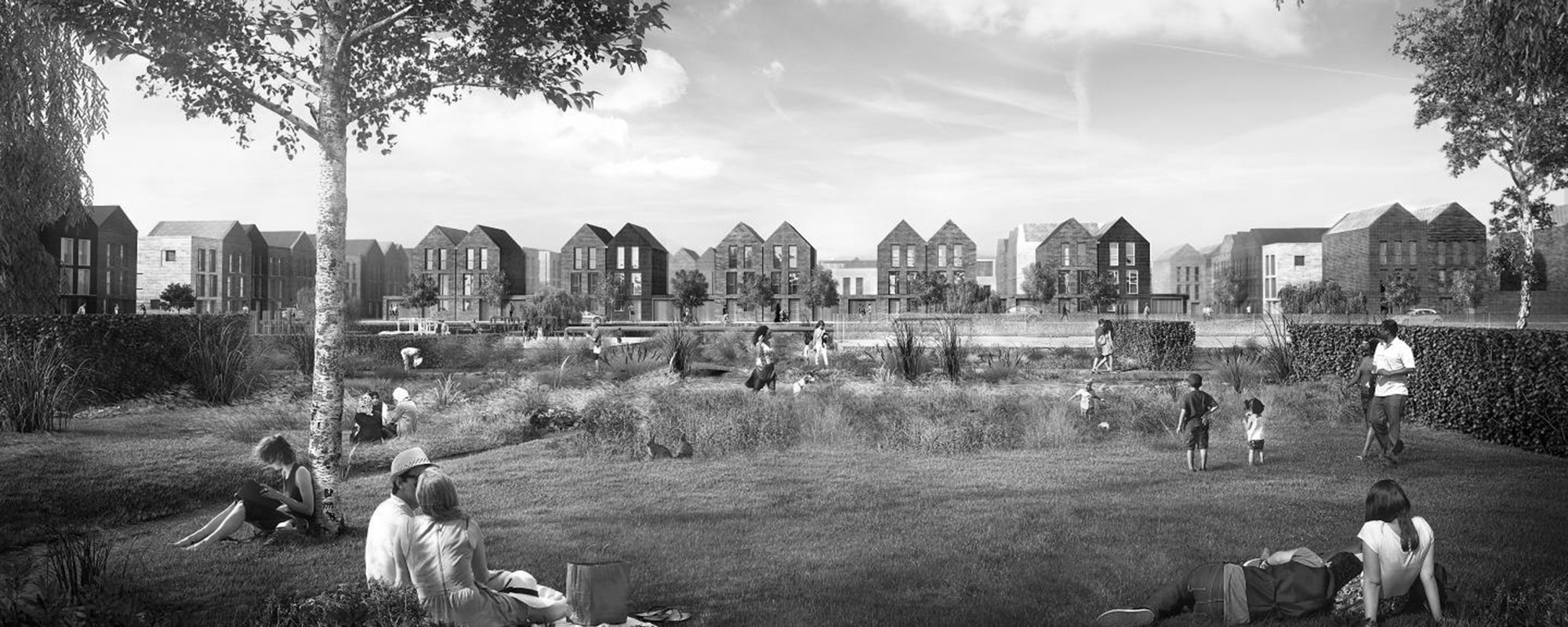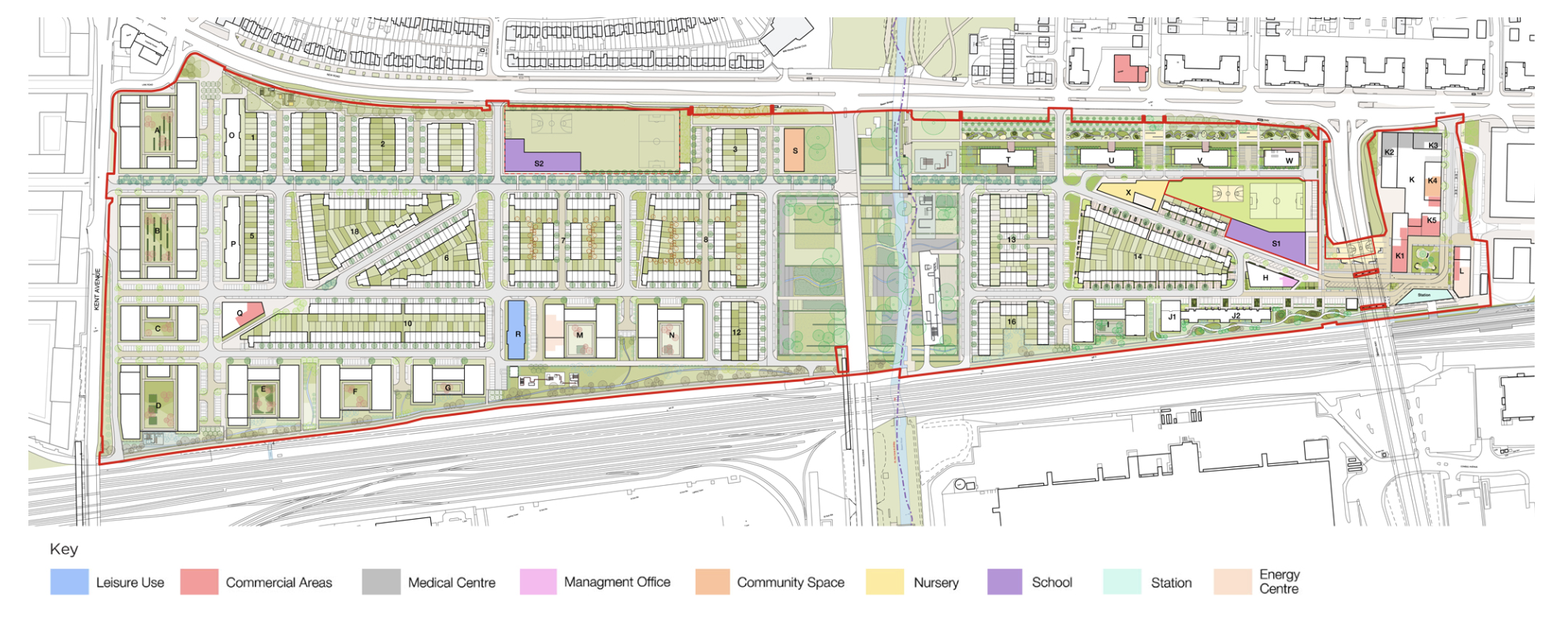Get updates from The Developer straight to your inbox Yes, please!
Made in Dagenham: the Ford-less future of £1bn Beam Park
You might think a brownfield site makes for a smooth development run, but Beam Park proves there’s no such thing as an easy site, writes Christine Murray

It’s the hottest day of the year, and I’m in site-gear touring a vast 720-acre development site in Dagenham, recording The Developer podcast. There’s not much here yet, but the enormous canteen is a clue to a future 450-strong construction workforce. The £1bn Beam Park will include 3,000 new homes, a new train station, medical centre, two primary schools and more.
“Beam Park is where manufacturing used to be,” says Rob Wilkinson, managing director of Partnerships East London at Countryside, which is developing the site in partnership with L&Q. “Henry Ford came along the railway line and decided to set up shop in Dagenham.”
But Dagenham is changing – and fast: “While Ford is still in the area, they’ve decanted from a number of their sites… which are going to be developed.”
The industrial legacy remains, however, in the scale of the surrounding infrastructure that skirts the site. Everything is supersized here, from the four-lane A1306 to the soaring Marsh Way flyover.
You would think a post-industrial site makes for an easy planning run – the site is long vacant, used as the rehearsal space for the 2012 Olympics’ opening ceremony, and there is little more than illegal fly-tipping and a salt store for gritting the roads.
But the scheme was initially refused by Havering and approved by Barking and Dagenham – the two boroughs that edge the scheme.
“It was about heights and density,” says Evonne Clarke, head of JV and development east region at L&Q. “They wanted to limit it to around eight storeys, but the site can hold more than that. And we’re delivering two new schools and a medical centre, and you do need residents to use all those.”
The scheme was revised to be 50% affordable housing – one of only three schemes to hit mayor of London Sadiq Khan’s target.
An important challenge driving density at Beam Park is finding land fit to build on: overground, there appears to be plenty of room, but what’s underground is limiting.
Constraints include the River Beam, which flows through the site, and a big underground gas pipe and gas pressure reduction station. As a result, 44% of the land area will be green space, including a park at the heart of the development.
“The scheme was revised to be 50% affordable housing – one of only three schemes to hit mayor of London Sadiq Khan’s target”
“The flyover, the gas pipe and the gas reduction site, and other infrastructure like the district heating network – there’s not much you can build on,” says Clarke.
Manufacturing is not the cleanest process, either. “There are hotspots of contamination, which we’ve had to deal with,” says Wilkinson. “We’ve capped these, so it’s not going to affect anybody, and in the green areas, there’ll be the correct amount of soil added there.”
He adds that in the past, “it’s been fairly common (but not with us) to allow areas to flood, such as car-parking areas. That’s not something we should do – I don’t see why anyone should accept that.”
“What we need to do to make this place successful is to make it attractive for people. There are swales, so visible flood mitigation, as well as invisible flood mitigation, under the ground.”
Site preparation works involve “surcharging” – a process lasting nine to 12 months that accelerates the settlement of the ground, squeezing water out of the peat, “to give us a stable base on which we can build”.
“We’ve done a lot of due diligence on this – it’s been an industrial site for 100 years. There will be things on record and things not on record. Our engineers spent time with Ford. We went to their head office and were looking through the microfiches of what was on the site previously,” says Wilkinson. “It’s just making sure you gather as much information as possible.”
Interestingly, for a site so closely associated with the car, the team is looking to the future of transport, with parking spots for only one in three residents on a site that is 80% flats and 20% houses.
“In the past it’s been common to allow areas to flood, such as car-parking… I don’t see why anyone should accept that”
As for the local communities, Wilkinson and Clarke believe the new station and schools are big wins.
“The new Beam Park railway station is expected to be up and running in early 2022. That creates a fantastic new facility not only for people moving into this area, but the existing residents across the road,” says Wilkinson. “And on the Marsh Way flyover, we’ll be building a lift down from there, so people on the Segro estate will also have access to the station.”
Adds Clarke: “Once it’s actually done, with the screening and making the underpass a nice, attractive area to walk underneath… we’re hoping that it will actually all work well. We’re quite confident that it will.”
This year’s Festival of Place is happening on 7 July 2020 – go to www.festivalofplace.co.uk for updates on tickets and speakers.
Listen to the podcast by clicking on the link above and sign up to The Developer Weekly to be updated when new episodes go online.
Sign up to our newsletter
Get updates from The Developer straight to your inbox
Thanks to our organisation members
© Festival of Place - Tweak Ltd., 124 City Road, London, EC1V 2NX. Tel: 020 3326 7238

